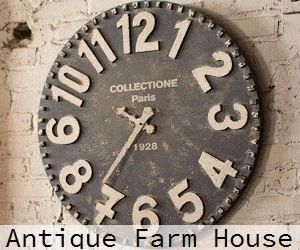While I've grown my chinoiserie collection by leaps and bounds over the past few years, I've also managed to thrift some uniquely beautiful pieces of pottery with a fascinating history that are not chinoiserie, but they do remind me of it -- in a way. The type of pottery I'm referring to is Satsuma pottery.
So what is Satsuma pottery? Where did I find mine, and how did I style it?
Let me begin by saying that when I began researching Satsuma pottery, I became overwhelmed with the search results. I found a TON, and not all of the results were in sync with each other, making for somewhat of a confusing read.
I am by no means an expert on this subject.
This post will be my interpretation of the history of Satsuma pottery as
best as I can decipher from all the online information I amassed during my
research. (And some styled beauty shots as well.) So grab a cup of your favorite something and let's get started!
Early 20th Century Japanese Satsuma Mille Fleur Thousand Flowers Ginger Jar ($495.00)
Photo credit: Chairish
Ironically, many of the "sources" I found used the exact same language to describe the history of Satsuma pottery. It's hard to tell who was plagiarizing who! So I've pulled together the common denominators from all the sources and set them forth for you here, trying to give credit where appropriate.
Satsuma ware is a type of earthenware pottery originating from the
Satsuma province in southern Kyushu, Japan. . . . The first kilns were
established in the 16th century by Korean potters, kidnapped by the
Japanese for their extraordinary skills. - Satsuma Ware -- a Guide To Collecting
The first presentation of Japanese Arts to the West was in 1867 and Satsuma ware was the star of the attractions . . . . . Popular designs featured mille-fleur (a thousand flowers), and complex patterns. Many pieces featured panels depicting typical Japanese scenes to appeal to the West such as pagodas, cherry blossom, birds and flowers and beautiful ladies and nobleman in traditional dress.- Lapada Guide To Collecting Japanese Satsuma Ware
Some Basic Things We Know About Satsuma Ware
1. Genuine Satsuma is native to Japan and not China. It has no English writing on it.
2. Genuine Satsuma is hand-painted with Japanese images (not Chinese).
3. The height of popularity for Satsuma was during the early Meiji period from around 1885 (Meiji period was from 1868-1912.)
4. Satsuma pottery was still being made as late as the 1980's.
5. Very early pieces are most likely unmarked. (Markings became common around 1870.) If your mark is written in English and says "Made in Japan" this makes it a very late piece.
(My tureen is stamped Satsuma on the bottom. I found a similar one that sold online and that listing said it was circa 1960.)
6. Satsuma usually has the artist's signature along with the Satsuma
mark.
My Satsuma Ware Tureen And Ginger Jar
Unfortunately, I don't have a full photo of my thrifted vintage Satsuma ware tureen out in the wild -- a.k.a. the porch of an estate sale near my daughter's university. When she and my other daughter were out thrifting together and found it, they immediately face timed me asking if I was interested and I said heck yes! You can see a part of it at the top of the above photo. (And yes, they got me the wire swan as well! Not a surprise considering my swan obsession. Visit Vintage Swan Planter Collection to get that story.)
While it was very different stylistically than anything I'd collected
previously, there was something about it that really spoke to me.
So I found a special place for it, filling it with dried hydrangeas from the yard and displaying it on the dining room sideboard.
I felt that dried hydrangeas were the perfect addition to the Satsuma tureen.
The tureen lid is a fine example of the delicate painting style commonly
found on Satsuma ware, including raised dots, colorful flowers and gold
embellishments.
There are also a few other traditional elements indicative of Asian life
like this soribashi, or hashi -- an ancient bridge.
Another traditional element painted on the body of the Satsuma ware tureen is an imperial cart, or Goshu guruma.
In ancient and medieval Kyoto, the imperial family and nobility rode in carriages drawn by oxen. . . . . Such beautifully appointed vehicles, decorated with a wild ginger motif, were a popular subject for decorative art objects and textiles. . . . . The painting convention of omitting human presence, common in the decorative arts, came to be called the “motif of absence” (rusu moyō). The Metropolitan Museum
By now you may have noticed my other thrifted Satsuma ware piece -- the equally gorgeous Satsuma ginger jar. It has much the same detailing as the tureen.
There are flowers, gold embellishments and finely detailed Japanese women in formal dress at what appears to be a tea ceremony. And the colors are similar to those of the painted tureen, however there is no makers mark on it.
I can't believe I forgot to take a picture of this one out in the wild -- a.k.a. Goodwill! I've really got to up my game on remembering to take that "before" photo of my featured items!
I'd say the "after' pic says it all -- that these two thrifted Satsuma ware pottery pieces, displayed together, elevate the look and feel of my dining room farmhouse shelves and sideboard decor. The fact that I like to mix old and new pieces, as well as textural elements, is boldly on display here.
Coupled with vintage ironstone, copper, wood, rattan, mother of pearl,
vintage (and reproduction) floral art work and faux greens, it's an
eclectic grouping to say the least. But sometimes eclectic works
best.
Every single item was thrifted, except for the vintage-inspired pink peony art work in the gold frame. That, if you can believe it, is from Target -- so it, too, was reasonably priced.
While the Satsuma ginger jar only cost me $2.99, the tureen was a bit pricey for my thrifting budget -- the seller wouldn't budge on the set price of $45.00, as she said she paid over $100.00 for it herself. Luckily, Mother's Day was coming up and my husband gallantly stepped in and agreed to purchase it for me as a gift! So thanks to him (and my daughters for finding it in the first place) I get to enjoy its unique beauty each and every day.
I found a doppelganger of the tureen for sale on eBay for $124.49.
I've fallen so much in love with my Satsuma ware I'm even considering getting a Satsuma phone case! These two are absolutely gorgeous:
iPhone Japanese Satsuma Pottery Birds and Flowers - Oriental Design Case
Galaxy Japanese Satsuma Pottery Family Scene Oriental Asian Design Case
Call me crazy, but at least a new phone case will most likely be less
expensive than more vintage Satsuma ware! (Not that I won't be looking, ha!)

















.png)











Leave a Comment!
And...this is why I LOVE thrifting! What a truly fabulous find, Kathleen! Blessings, Cecilia @ My Thrift Store Addiction
Wowsie SCORE!!! That Tureen looks perfect on your shelf design. Beautiful. Hugs. Kris
wow, I totally love your arrangement of your pieces,and thanks for the information. I've had a few pieces slide through my fingers, I have an Etsy site but these are simply gorgeous. I know I have chased the lotus leaf mark on some pieces which are actually later except for one turned up to be very early...and it went the first week listed, so it was probably real...lol. Sandi
Wow great find and the piece with hydrangeas is gorgeous!
Really nice finds, and they looks so good together, Kathleen. Love that peony print from Target! Did you know they're also carrying a licensed piece by Marian Parsons (Miss Mustard Seed)? I've forgotten the name of the company through which she licensed her artwork, but it's also in an old world style like the peonies.
I'm drawn to Asian pieces, so your Satsuma really appeals to me. Let's see how far you take this latest thrifting direction. 😉
Post a Comment